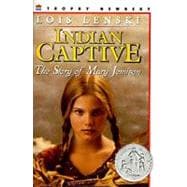This is the story of Mary Jemison, a real person, who was captured with her family from their farm in the 1750s, when she was a young teen (there is some debate as to her true age at the time - 12-15 is generally agreed). The rest of her family was massacred, but Mary was taken on a several-days journey and eventually adopted by a Seneca tribe. Though she had numerous opportunities to return to life as an English settler, she consistently chose to stay, and lived the rest of her life (to age 90) as a Seneca.
The Seneca - and many other tribes in the area - had a tradition of adopting a captive in place of a member wrongfully killed. Mary was brought to a Seneca family who had lost a brother in Washington's war.
The facts of her story are relatively well known - she never learned to write, but as an older woman she was extensively interviewed and her story was published.
This book, as the author states in the introduction, was intended to be an exploration of Mary's emotions during her first months with the Seneca. She made an effort to be historically accurate when possible, and admitted to fabricating certain details in the interest of telling the emotional story. And I think she did a fantastic job.
She starts by calling Mary "Molly". It was a common affectionate form of Mary at the time, and some of the contemporary writings refer to her as "Molly Jemison", indicating that she commonly went by Molly as a child, and would have thought of herself by that name at the time of her capture.
We watch Molly's separation from her family (softened a bit, since in real life Mary recognized her mother's red hair on a scalp an Indian was cleaning - in the book she is separated from her family, and learns their fate months later).
We see her efforts to remember where she came from and who she was, while immersed in the world of the Seneca - learning the language, trying to speak in English secretly, and ultimately forgetting it enough that a passing British soldier has to jog her memory with the Our Father ("words any English-born child would know by heart"). We observe Molly coming to terms with having been violently kidnapped only to be brought completely into the family fold - captured in order to be loved. Confusing at best. But slowly, gradually, she starts to love them back. And not in a Stockholm-syndrome kind of way, but in an actually part of the family and happy kind of way. Culture crossing.
And throughout, we see the idea of escape as it evolves from attractive but impossible, to possible but unappealing, to available and declined.
A really fascinating read - written in the 40s, but with a very even hand, and probably acceptable in most classrooms today. It made me look up and read a fair bit of Mary's story in her own words, and explore a little of the literature of why so many of the white captive women of the time chose to remain with the Indians.
Recommended. To everyone. And you can probably even find a copy!
Further reading: http://historymatters.gmu.edu/d/5794/
Subscribe to:
Post Comments (Atom)

No comments:
Post a Comment